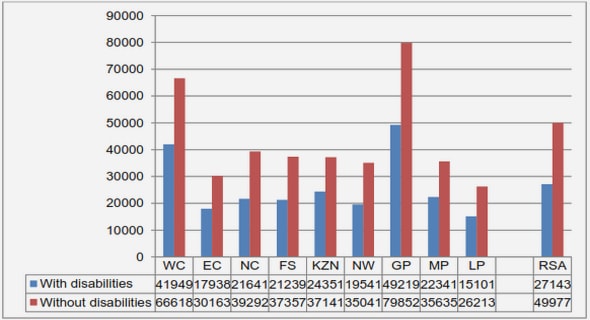(Downloads - 0)
For more info about our services contact : help@bestpfe.com
Table of contents
General Introduction
1 A Streetcar Named Opportunity: Can Rail Foster Social Integration
1.1 Introduction
1.2 Institutional Background
1.2.1 Deprived peripheral neighborhoods in France
1.2.2 Tramways in France
1.3 Data and Empirical Strategy
1.3.1 Data
1.3.2 Empirical Strategy
1.3.3 Descriptive statistics
1.4 An access to jobs ? Unemployment trajectories with a new transit option
1.4.1 Dynamic setting
1.4.2 Heterogeneity
1.4.3 How precise is this zero ? A comparison
1.4.4 Robustness checks
1.4.5 Long-term effects
1.5 Capitalization and population displacement
1.5.1 Estimation strategy
1.5.2 An accessibility shock that capitalizes into prices
1.5.3 Population change through migrations
1.5.4 The ambiguous role of social housing in preserving social mixity
1.5.5 Anticipation or nuisance ? Effect of tramway construction works
1.6 Conclusion
2 Optimal Spatial Policies with Local Public Goods and Location Preferences
2.1 Introduction
2.2 Data
2.3 Stylized Facts on Public Good Agglomeration Economies
2.3.1 Raw Patterns
2.3.2 Descriptive Regressions
2.3.3 Preliminary Comments on Welfare Implications
2.4 Economic Geography Model with Local Public Goods
2.4.1 Central Government
2.4.2 Demand for Cities
2.4.3 Demand for Private Goods
2.4.4 Supply and Ownership
2.4.5 Demand for Public Goods and Tax Competition
2.4.6 Equilibrium
2.5 Optimal Policies
2.5.1 Intuition in a Two-Region Example
2.5.2 Efficient Allocations
2.5.3 Optimal Transfers
2.5.4 An Efficiency Test
2.5.5 Model Calibration
2.5.6 Efficiency of Observed Transfers
2.6 Equity and Density
2.6.1 Compensation and Responsibility
2.6.2 Revealed Social Preferences
2.7 Conclusion
3 The Carbon ‘Carprint’ of Urbanization: New Evidence from French Cities
3.1 Introduction
3.1.1 Theoretical framework
3.1.2 Main contributions
3.2 Data on fuel consumption and urban form
3.2.1 Fuel consumption: a household measure
3.2.2 A set of quantitative measures of urban form
3.3 Empirical strategy and results
3.3.1 Urban form and fuel consumption: Baseline estimations
3.3.2 Urban form and fuel consumption: Causal estimations
3.3.3 Robustness checks
3.4 CO2 car emissions and city-size: a bell-shaped curve
3.4.1 CO2 car emissions of the sample-mean household across MAs
3.4.2 Driving footprint and city-size: A bell-shaped curve
3.5 Conclusion
General Conclusion
Bibliography
Appendix
A A Streetcar Named Opportunity
A.1 French Tramways
A.1.1 A brief history of Tramways
A.1.2 Descriptive statistics
A.1.3 The French public transport infrastructure decision process
A.2 Unemployment analysis
A.2.1 Geocoding procedure for unemployed’s addresses
A.2.2 Descriptive statistics
A.2.3 Heterogenity Analysis
A.2.4 Results on Common Openings
A.3 Housing market
A.3.1 Occupation of buyers and sellers
A.3.2 Robustness checks on housing market
A.3.3 Heterogeneity
B Optimal Spatial Policies with Local Public Goods and Location Preferences
B.1 Model
B.1.1 Local Public Good Demand
B.1.2 A Two-Region Example
B.1.3 Planner’s Problem
B.2 Calibration
B.2.1 Public Good Demand Calibration
B.2.2 Constancy of Expenditure Shares
B.2.3 Calibration of Public Good Index
B.3 Complementary empirical results
C The Carbon ‘Carprint’ of Urbanisation 243
C.1 Statistical zonings
C.1.1 French Metropolitan Areas
C.1.2 A monocentric typology of French Municipalities
C.2 Fractality
C.2.1 What is fractality?
C.2.2 The box-counting algorithm
C.3 Additional descriptive statistics
C.4 European Soil Data Base
C.5 Other specifications to take spatial sorting into account
C.5.1 Uncoupling socioeconomic and spatial effects
C.5.2 Absence of controls for socioeconomic characteristics
C.6 Other specifications with city-level and neighborhood level variables
C.6.1 with MA-centered 3Ds
C.6.2 with non MA-centered 3Ds
C.7 Alternate projections
C.7.1 Projection with MA-centered 3D variables
C.7.2 Projection with city-level and neighborhood level variables
C.8 Additional regression results
C.9 Complementary results on the bell-shaped curve
C.9.1 The mean household ’carprint’ when income varies across cities
C.9.2 Robustness checks on the bell-shaped curve




